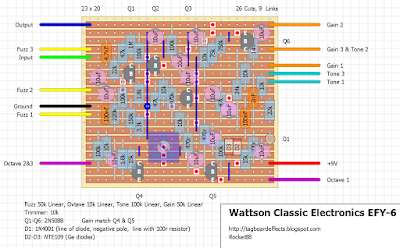Now for those of you that liked the idea of building a Hoof Reaper, which I mentioned when I posted the layout for the Tone Reaper, the Tentacle should go in between the Hoof and Tone Reaper for the Octave effect. So for all the disciples of fuzz out there, pair this your favorite fuzz for some crazy octave up fuzzy goodness.
Direct from the source:
The Tentacle is a classic analog octave up effect. It is the very same octave from our beloved Hoof Reaper pedal. We got so many requests to make this a stand-alone unit that we just had to make it a reality. You can now add an excellent, swelling octave up to anything your heart desires! Pair it with your favorite fuzz, strap on a headband and unleash your inner Jammy Hendrix. Put it in front of another octave up and blow your amp's mind. Throw it in the effects loop of a delay and marvel at what happens (then tell us, we’d like to know too). What’s better? It has no controls! Nothing to worry about at all here, just hit the switch and go for it. The Tentacle is an analog octave up, the effect will become much more pronounced when using your neck pickup and playing above the 12th fret.
Edit: For those that have built this already based on the original layout upload, flip Q2 so the Emitter is towards +9V and the Collector is towards Ground.












